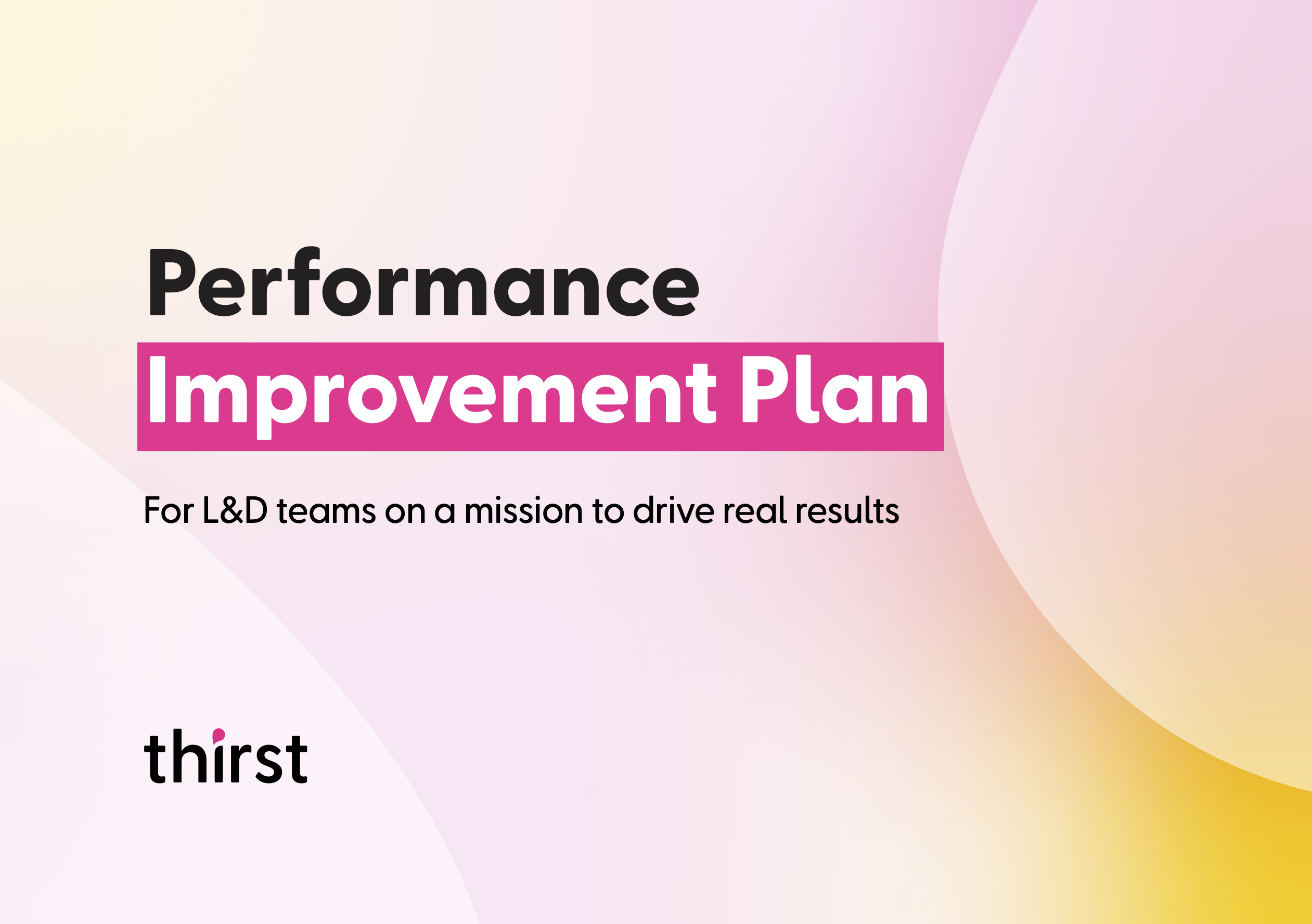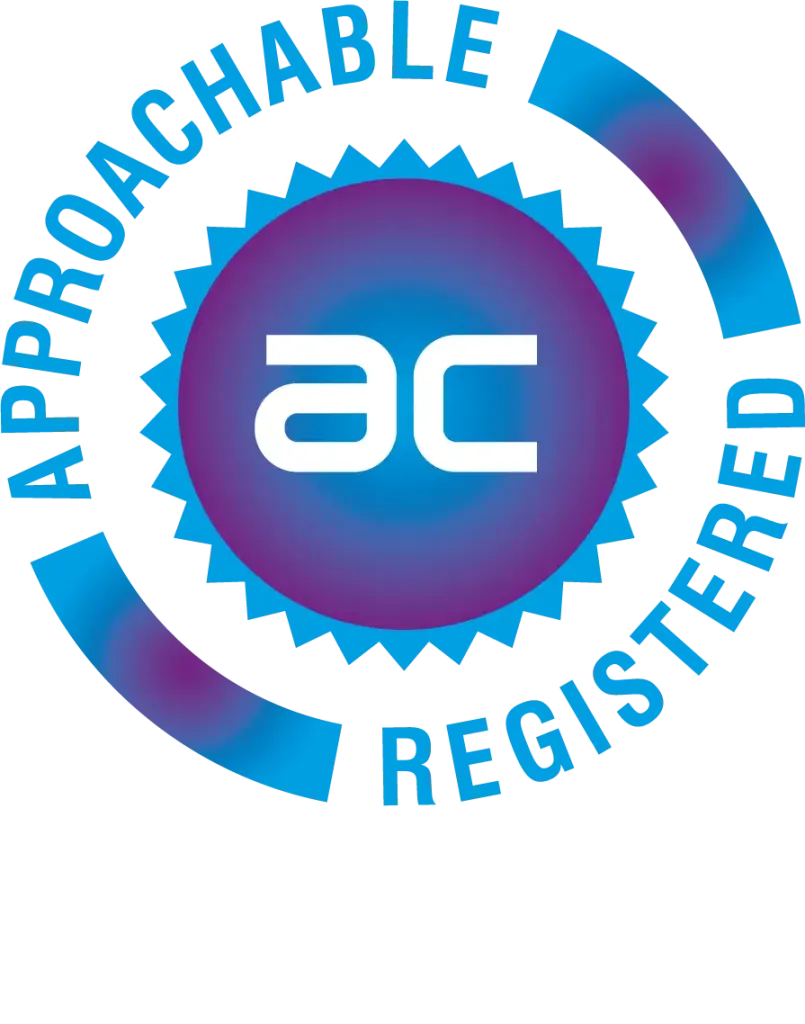Should an employee’s performance review fall short of expectations, the situation can be uncomfortable for everyone involved.
Yet, for any organisation to be successful, it simply must get the very best out of every member of the team.
Team leaders, managers, and even senior decision-makers often find themselves walking a tightrope between encouraging and rewarding stellar performances and holding people accountable when they fall short of expectations.
This can be challenging. Especially when multiple, even a singular, poor performance can have a ripple effect organisation-wide. Thankfully, organisations large and small can circumvent potential poor performance pitfalls by implementing Performance Improvement Plans (PIPs), for short.
PIPs are valuable tools. Think of it like this: what organisation doesn’t desire to optimise employee performance? Yet, knowing exactly how to do this is challenging. 🤔
The good news is that if you design and roll-out an effective PIP, you’ll have a clear, organised, action-oriented, and step-by-step asset to monitor and measure employee performance, providing valuable insights that inform better decision-making, and ultimately, a more productive, transparent, and ultimately successful organisation from top to bottom.
So, if this is something you want, keep reading. We’ll outline exactly what you need to know about PIPs, from a definition to when to use one, what to include in your PIP, top tips and mistakes to avoid.
Want to know more? Keep scrolling.👇
What Is a PIP?
A Performance Improvement Plan (PIP) is a formal, structured document employers should leverage to gauge employee performance, highlighting performance and identifying areas of improvement.
Acting as a supportive and corrective tool, PIPs outline specific areas of an employee’s performance, tailored to their individual role and day-to-day duties, while simultaneously detailing a precise plan of action to address any performance concerns, with measurable goals, timelines and relevant resources.
Remember that PIPs are not precursors to disciplinary action or termination. They’re frameworks to encourage improvement, addressing shortcomings while acknowledging strengths.
The best PIPs are specific, tailored to individual organisations, departments, and individual employees.
Basically, if you want to optimise employee performance, support continued development, and reinforce accountability, PIPs are the ideal solution, provided that you deploy them at the right time.
When to Use Performance Improvement Plans?
We’ve already alluded to this, but knowing when you should and shouldn’t use a PIP is, ultimately, up to the organisation.
Some organisations may feel it unnecessary to deploy such a rigorous performance framework from the earliest stages of employment. Others may feel a PIP is only necessary when there’s a consistent performance shortfall.
Its success ultimately depends on the organisation. And, to a lesser extent, how the PIP is ‘sold’ to everyone.
Below is a brief overview of the circumstances when a PIP may be appropriate.👇
Persistent Underperformance
The first circumstance when a PIP may be appropriate is when employees persistently fail to perform to the required standard. Not meeting targets, deadlines, quality standards or when informal feedback hasn’t resulted in improvement may indicate that more formal action needs to be taken–hence, a PIP.
Performance Decline
Any noticeable decline in employee performance, without a clear explanation (for example, long-term illness, disability or prevalence of personal issues) influencing an employee’s ability to perform the duties of their role may require the intervention of a PIP. 📉
When Interventions Fail to Yield Improvement
Obviously, when the standards of a high-performing employee begin to dip, the organisation’s first step should be to intervene, discuss the circumstances and try to understand why.
If this has failed, and lasting improvements haven’t been made, PIPs are the next logical action.
Conduct or Behavioural Issues
If an employee demonstrates ongoing behavioural issues, for instance, poor performance, lack of teamwork or respect for colleagues, even unprofessional conduct, and this affects team dynamics, organisations can intervene with a PIP.
Before Disciplinary Action Is Taken
Performance Improvement Plans often serve as the final opportunity for an employee to improve performance before more serious action is considered, offering both transparency for the employee and legal protection for the organisation.
Align with Organisational Policy or HR Procedures
Some organisations have specific HR policies that require a PIP before actions like employee reassignment or termination are taken. This ensures that fairness and due process have been adhered to.
What to Include in a PIP
Whereas there isn’t a strict framework, outlining what every organisation should and shouldn’t include in a PIP, it’s wise to have a basic template that everyone, from managers and team leaders to those they’re responsible for, can easily follow.
The best approach to writing a strong PIP is to treat it as a collaboration, one that encourages people to work together to identify what elements of a role have been performed well and what elements would benefit from greater insight and guidance.
Remember, every employee is unique. Actions that benefit one may not benefit another.
Similarly, the root cause of any performance shortfalls can also be different, varying from insufficient training to organisational changes, even issues in one’s personal life. It’s important to understand these factors when designing your Performance Improvement Plan.
Yet, despite this, every PIP should include specific information. Below, we’ve outlined an overview of what to include in your Performance Improvement Plan.👇
Employee Information
Every PIP should include relevant employee information details. This demonstrates clarity, accuracy, accountability, and performance management throughout the process.
Not only that, but clearly outlining employee information makes the PIP easily identifiable, reinforcing personal accountability.
Traditional details include the employee’s name, job title, department, potentially an employee ID number and the manager or team leader they report to.
Remember too that clear identification is especially important should any disputes, grievances or legal proceedings arise. This also demonstrates that the performance management process is fair, formal, and appropriately documented, strengthening the organisation’s position.
Purpose of the PIP
All good PIPs have a clear purpose, a short explanation of what it is.
This sets the tone for the entire document, simultaneously providing clarity, direction, and intent for both the organisation and the individual.
More than that, having a purpose for the PIP clearly communicates why the PIP is being implemented. Not just what actions need to be taken to improve performance.
More than that, a Performance Improvement Plan provides valuable context, helping employees to understand the connections between their present performance and the actions they need to take to improve it.
Another reason for including the purpose of the PIP is that it aligns employee and managerial expectations, illustrating areas where employee performance has met expectations, what improvements can be made, and why these improvements matter.
Finally, in cases when further HR action is needed, clearly highlighting a PIP’s purpose strengthens the organisation’s position to demonstrate a fair, transparent, and goal-oriented performance process.
Areas of Concern
Areas of concern identify what needs to change and why to improve employee performance.
These could be large and small, something as simple as being ready to work before the official start time or improving technical skills. This is the foundation of any Performance Improvement Plan.
Why is this so important?
Well, for starters, areas of concern demonstrate a vital element of clarity, giving employees undeniable reasons for their current situation, accelerating their chances of taking actions to improve performance swiftly.
Not only that, but PIPs can also establish a baseline for measuring performance improvement. Without this, it can be difficult for organisations to determine if improvements have been made and if the plan has been successful.
Lastly, Performance Improvement Plans encourage open dialogue for constructive conversations between managers and members of their team. These should specifically address all areas of concern. From failing to meet targets to persistent lateness, each concern can be clearly addressed and discussed. 🗨️
Expected Standards/Goals
Setting expected standards and goals is similarly crucial to performance improvement plans. Why? Well, they outline a structured framework to achieve desired outcomes and, ultimately, promote organisational value.
Objectives set serve as a roadmap, guiding employees along a journey. The destination is enhanced performance.
This gives employees the tools they need to become more proficient and productive in their day-to-day activities. This benefits both employee personal development and organisational performance.
The key to actioning and monitoring the success of any PIP is to use what successful organisations leverage – SMART goals.
Why? SMART (specific, measurable, achievable, relevant, and timebound) goals provide a structured, clear framework which concisely identifies, tracks, motivates, aligns, and prioritises goals.
Action Plan
Now we come to, arguably, the most important element of any PIP – the action plan.
Having an action plan in place, one that clearly highlights the tasks that need to be completed, pairing these with the support offered, e.g., any mentoring and coaching, makes the whole process transparent.
In addition to the transparency, having an action plan provides everyone with much-needed clarity and direction, i.e., the specific actions needed to achieve goals.
It breaks down these performance improvement objectives into manageable and measurable tasks, therefore improving monitoring throughout the process, whilst holding team members and their managers accountable.
But that’s not all.
Action plans help employees to focus their efforts on areas that must be prioritised to improve performance and identify resources, such as effective L&D, like that provided by Thirst, or additional assistance, such as mentoring or shadowing.
Lastly, action plans act as clear documentation which can be referenced by managers and those they’re responsible for in the future.
Timeline
Timelines set clear expectations, with specific goals and milestones, so both parties understand what’s expected of them. They also provide structure and focus, separating actions in manageable steps while promoting performance monitoring. 🕰️
By setting a clear period for improvement, managers can objectively assess if an employee has met the expectations within an agreed timescale. Be sure to document the whole process…this can prove very useful to future decision-making.
Moreover, having a defined timeframe creates a sense of employee responsibility, even urgency, encouraging commitment to improving performance throughout the process.
Support and Resources
As the foundation for successful improvement, support and resources provide employees with the requisite guidance and tools to overcome any barriers to improvement and maximise development opportunities.
Consequences of Not Meeting Objectives
Now, of course, the consequences of not meeting the objectives will vary from organisation to organisation.
They’re entirely at the discretion of the organisation, after all! Good PIPs will outline these consequences.
Typical consequences range from disciplinary actions, such as verbal or written warnings, to reassignment, termination of employment, and even the possibility of legal action.
Including the consequences of not meeting objectives on your PIP promotes transparency while making it clear that, unless improvements are made, further action will be taken.
Employee/Manager Sign-off
Getting employee and manager sign-off as part of your PIP ensures a formal record of accountability of the circumstances and agreement of actions, timelines, and goals.
The documentation then acts as a shared record, potentially safeguarding the employer from any potential legal challenges should improvement not be made.
Don’t forget that having a sign-off provides employees with a reference point on their improvement journey.
Performance Improvement Plan Template
Below we’ve included a downloadable Performance Improvement Plan designed to assist team leaders, departmental managers, directors, and HR professionals to effectively address and manage performance improvement.
This structured document outlines all the essential information needed to address and manage the process, providing a clear improvement roadmap.
The goal of this template is to help organisations to record, monitor and manage employee performance, and it can even be adapted to suit your organisation’s specific needs!

Tips for Writing an Effective PIP
Still want to learn more about how to write an effective PIP? We’ve got you covered. Keep reading below to learn top tips that’ll help you to further enhance the effectiveness of any Performance Improvement Plan you choose to write.👇
Build a Plan Around Any Issues
Successful PIPs are specific. They address the root performance causes. They are built around the issues raised. – This could be workplace conduct. Poor performance. Persistent, unacceptable absenteeism. A whole host of issues.
Be sure to examine the employee’s work habits, their abilities and skillsets, and the environment. This provides valuable context when trying to understand the issues that are holding them back from achieving objectives.
Make the Employee an Active Participant in the Process
By involving the employee in the development of their own performance improvement plan, you encourage collaboration while ensuring that they have a clear understanding of their responsibilities, goals, and any actions needed for improvement.
Additionally, this active participation cultivates a shared sense of ownership and responsibility for meeting performance expectations.
Give Regular Feedback
Strong Performance Improvement Plans don’t simply end once a plan has been formed.
They’re followed up. Maybe revisited a month later at the employee’s next 1-2-1 or addressed during standard working days.
By offering regular feedback, employers promote support and transparency. They steer employees, helping them to quickly and successfully improve their performance. Regular feedback is provided in the form of ongoing communication.
Rewarding Success
Lastly, organisations should be sure to reward success along the way.
No matter how the Performance Improvement Plan is framed, some employees may feel discouraged….The goal is to elevate, not deflate.
By rewarding success, employees may feel encouraged to continue their improvement journey, bringing greater prosperity to their own role and the organisation. 🏆
Common PIP Mistakes to Avoid
As you can see, crafting a successful PIP requires a considered, structured approach.
Such a complex process is bound to have a few pitfalls to avoid. The good news is that by understanding these mistakes, you can create a PIP that allows you to maximise your plan’s success.
Below are a couple of the common PIP mistakes to avoid at all costs.
Not Setting Clear Objectives
Setting clear objectives is paramount. How else is the organisation and the employee to know what’s required of them? Define these objectives clearly and you’ll effectively guide, monitor and measure improvement progress.
Employees who understand what’s required of them perform well. This is especially important when improvement is needed. A well-structured performance improvement roadmap, one that has clear objectives, provides a tangible success marker.
Objective ambiguity can lead to misunderstanding and missed growth opportunities.
Ignoring Employee Input
By not engaging employees in the planning process, you risk missing valuable insights into their performance improvement journey.
Be sure to encourage open, honest dialogue. Remember, employees often have their own, unique perspective on their own strengths and where performance could be improved.
A collaborative approach to performance development, one that acknowledges shortcomings and working together to address these, makes employees feel supported and included in the process, and more likely to elevate their performance.
Not Checking in Regularly
Don’t neglect to check in regularly at varying stages of the process. Why? It ensures that the plan remains on track and the employee feels supported. Ongoing conversations create opportunities for valuable feedback to be shared and any obstacles addressed.
A structured check-in routine encourages that important proactive approach to employee improvement, encouraging accountability, while celebrating small wins and addressing any concerns.
Lacking Clear Consequences
Without clear consequences, a performance review plan will struggle to appropriately motivate employees. It’s that simple.
Make sure that expectations, timelines, and repercussions are clearly illustrated. This implies that the process is necessary and paramount.
Vague consequences, such as ‘we’ll see’ as an answer for the repercussions of poor performance, won’t inspire employees to improve. Specific consequences, such as employment termination, will.
Conversely, a detailed explanation of any potential outcomes demonstrates understanding, motivating improvement, which benefits both the employee and the organisation.
Failing to Document the Process
Keeping detailed notes of employee progress throughout the PIP is crucial to evaluating its success, while providing important insight and context into strategies that work well and strategies that have failed to ignite improvement.
Additionally, documenting the process promotes organisational transparency and continuity, something that may prove to be vital in certain circumstances, such as a managerial change, highlighting an unbiased audit trail of employee performance.
Final Thoughts
When designing a performance improvement plan, there’s more to consider than you may first think. And don’t forget that the most successful PIPs are specific, tailored to the organisation, circumstances and the people involved.
Although there may be different circumstances when a performance improvement plan should be implemented, ultimately, the reason for using one is simple: to elevate performance, benefitting the employee and the organisation.
Include the right information in your PIP, while avoiding any pitfalls, and you’ll maximise your chances of transforming a poor-performing employee into one who evolves their abilities and expertise, strengthening their position in the organisation. Maybe even becoming a leader. ⭐
Got 2 Minutes?
If your organisation is struggling with disengaged learners, Thirst has the solution.🔥
Thirst is an AI-powered learning platform that helps L&D teams of all sizes boost learner engagement and create experiences tailored to today’s learners.
Take a guided tour today and see Thirst in action.
For more e-learning insights, resources and information, discover the Thirst blog.
You may also enjoy:
Synchronous vs Asynchronous Learning: The Main Difference | How to Create an Effective Employee Training Plan (In 7 Steps) | How to Make Compliance Training Fun & Engaging







